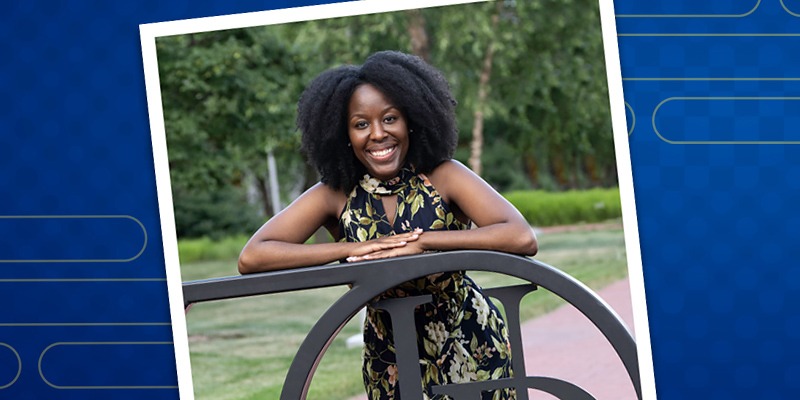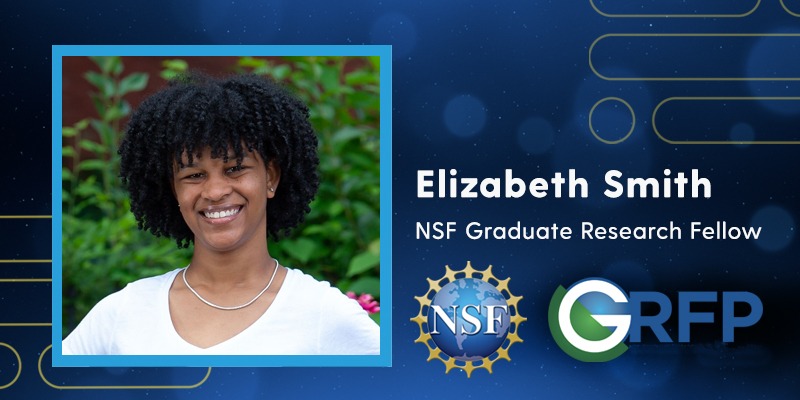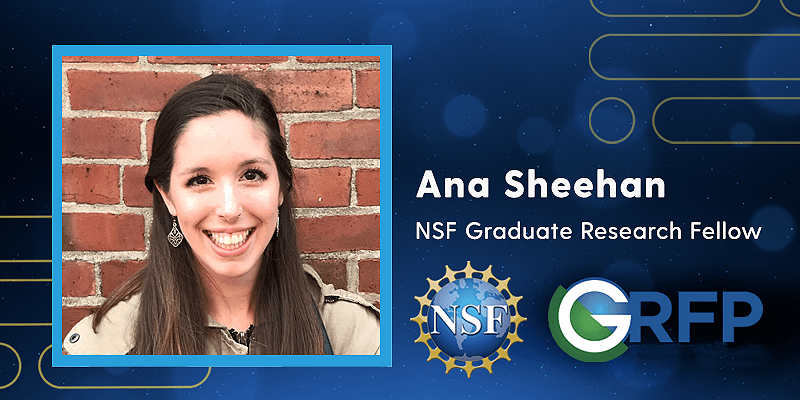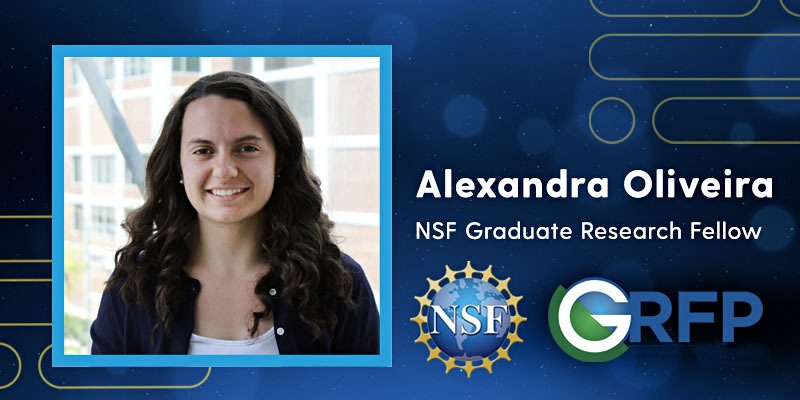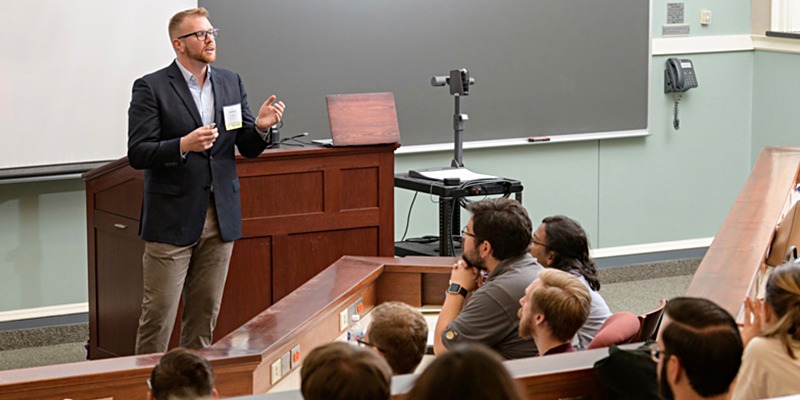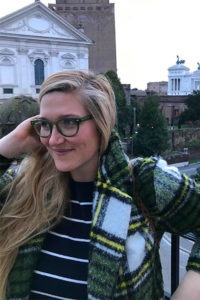
Hannah Segrave in Rome
A conversation from Rome with art historian Hannah Segrave
Hannah Segrave is a Ph.D. candidate in art history at the University of Delaware pursuing the interdisciplinary curatorial track focused on preparation for curatorial careers in specialized art historical fields.
In the fall of 2017, Segrave presented at an art history conference in Rome, partly funded by a research travel grant from UD’s Center for Material Culture Studies, and remains in Rome for the research and writing of her dissertation, “Conjuring Genius: Salvator Rosa (1615-1673) and the Dark Arts of Witchcraft.”
Segrave is pictured here from Rome, overlooking the church of Santa Caterina da Siena a Magnanapoli and the monument to Vittore Emanuele II (the “Wedding Cake”) in Piazza Venezia.
What do you love about the study of art history, and what motivates your interest in it?
First and foremost, art history is important because it taught me how to critically look at the world around me, as well as my own place in it. We live in a world saturated with images. Visual analysis is a vital skill that allows you to interpret what an advertisement is trying to tell you about the kind of person you should be, just as it allows you to understand the gender dynamics or intellectual values in Italy that are reflected in a painting.
My research focuses on depictions of witches in early modern Europe, the time of the infamous “witch craze” that saw hundreds of thousands of people persecuted for witchcraft. While my work specifically aims to illuminate how the artist Salvator Rosa constructed ideas about art and his public persona through his representations of witchcraft, more broadly it also reveals the ways in which ideas about witches in our own time come from this period. The history of witchcraft, especially as told through images, demonstrates how men are clearly so terrified of women that they have been demonizing them for centuries. If you look at the thrashing, naked, wild-haired, crooked-nosed old hags that Rosa was painting in the 1650s, you’ll see there’s a direct line to witches like Snow White’s evil stepmother or the Sanderson sisters from Disney’s Hocus Pocus.
Being able to recognize and analyze the messages contained in these images is one of the most powerful ways that you can expand your own ways of thinking, and being critically engaged in the world around you is a crucial part of working toward a more open, aware and equitable future.
What led you to UD’s art history graduate program?
UD was my top choice for a Ph.D. program in art history because I knew I wanted to specialize in baroque art. But unlike most schools—which often don’t even have one professor who specializes in Italian baroque art—at Delaware there were three professors who all specialized in the 17th century (especially my own adviser), so I knew I would be able to get both this incredibly specific and broad training in the exact period I wanted to focus on.
Just as importantly, I was also able to talk to prospective students while I was applying—who were welcoming, kind, and smart as hell—and who let me know that students are equally funded, which created the open and non-cutthroat atmosphere and community that I really enjoyed being a part of during my coursework.
UD’s art history curatorial track is relatively new—what attracted you to that program?
The art history curatorial track actually started during my second year in UD’s art history program. As someone who spent her whole life thinking she was going to be a Latin professor, I had no idea about the world of curating and museums in any real sense until I got to UD.
UD’s program and curatorial track are particularly unique because we are so fortunate to have one of the very few art conservation programs in the country. This relationship between art history and art conservation is such important training for those interested in curatorial careers, and it meant that I was introduced to ideas of technical art history and conservation and object histories that I never would have been exposed to so early at another school.
My initial coursework in the curatorial track was completely illuminating and made me realize how much the field was in line with the kind of questions I wanted to ask in my own research. It gave me a new purpose toward working on my Ph.D., and that summer I went on to complete my doctoral internships at the Cleveland Museum of Art. I quickly learned that curatorial work was not only the exact type of research that I wanted to invest my life in, but also that working in the kind of collaborative environment of a museum was the kind of lifestyle that suited who I am both as a scholar and as a person.
Have your research and writing been affected by the current stay-at-home environment in Italy? How have you adapted?
The lockdown completely changed my life and my research. Normally, I was working at two or three different libraries, Monday through Friday, and often going to churches or museums on weekends. Now I work completely from home.
While I am lucky to have a little office with a desk in my apartment, I don’t have any books—literally not a single one! I’m only here for a year, and working at well-stocked art historical research institutions, I didn’t need them. I finally broke down and found a key monograph that I needed and just had it shipped here so that I could continue this important aspect of my research for my current dissertation chapter. Later I will have to figure out how to actually get this 500+ page, 3 kg book home.
I’ve got to say, it is really hard to write a dissertation without books. I’m working on a new chapter at the moment, a time when I usually do a bit of exploratory reading which now I can’t. I often find myself working on a section and getting an idea about something I need to learn about, and then I just have to stop because I don’t have the materials I need to figure out the answers to my questions. It can feel really jarring, frustrating and even a little disheartening.
Luckily, UD’s Morris Library staff has been so incredible in helping me get access to new online materials, working with partners to increase accessibility, and scanning and sending articles. While it won’t be enough for me to properly edit and finalize the dissertation, it is enough to keep me going while I am trying to crank out chapters to get to a full draft of my project.
I just keep trying to write and be kind to myself, trying not to beat myself up for what I can and can’t do.
What are some of the highs and lows of being in Italy at this particular time?
I feel so lucky to be in Italy during the lockdown. Unlike the stories I hear from friends and family throughout the U.S., we haven’t really been experiencing any food or supply shortages in Rome. However, once the Italian government moved to lock down the country, it meant you are not allowed to be outside except for the grocery or pharmacy. If you are deemed too far away from your home or without a reason for being outside, you can be cited for violating quarantine rules with a fine of up to 3,000 euros.
So, long gone are the early days when I walked laps around the empty Circus Maximus. That said, Rome is fully blooming into spring, and it’s wisteria season in my neighborhood, so while I take my daily walks, smelling the fresh flowers in the Roman sun, I feel a complete sense of peace and contentedness. Rome has been my home so many times throughout my life (this is my fourth time living here), and even in this very strange and surreal world, there’s nowhere I would rather be.

